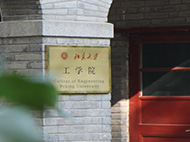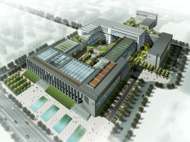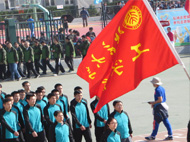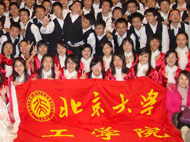主 办:生物医学工程系
报告人:Kaiming Ye Department of Biomedical Engineering Center of Biomanufacturing for Regenerative Medicine Binghamton University, State University of New York
时 间:4月18日下午14:00-15:00
地 点:王克桢楼1006会议室
主持人:席建忠 教授
报告内容摘要:
Diabetes mellitus is a debilitating metabolic disease representing a major health issue worldwide. The loss of β cells by autoimmune destruction leads to the development of type 1 diabetes (T1D). While type 2 diabetes (T2D) is caused by a combination of peripheral insulin resistance and inadequate insulin production by islets, patients at later stage of T2D suffer from massive loss or dysfunction of β cells in the pancreas. Islet transplantation is currently only cure to the diabetes. The scarcity of donors for islet transplantation permits the availability of this treatment to vast majority of patients. We developed a technology enabling the development of physiologically functional human islet organoids from iPSCs. The cytostructural analysis of these organoids revealed a typical architecture of human adult islets, comprising α, β, δ, and PP cells. Both β cells and non-β cells were mixed to form organoids that secrete insulin and glucagon in response to glucose levels. Dual color immunostaining and flow cytometric analysis revealed that the majority of β cells were monohormone expressing cells, expressing high levels of PDX1, INS, NKX6.1, MAFA, and Glut2. No co-expression of glucagon was detected in these cells, indicating a high level of β cell specificity. These lab-produced and fully developed islet organoids can serve as a personalized islet model for pathophysiology and precision medicine of diabetes. They can also be integrated into organ-on-chips for drug screening and validation. Clearly, these lab-regenerated islet organoids can be used for islet transplantation, leading to a cure to diabetes.
报告人简介:
Dr. Kaiming Ye is Professor and Department Chair of Biomedical Engineering, Professor of Pharmaceutic Sciences, and Director of the Center of Biomanufacturing for Regenerative Medicine at the Binghamton University (BU), State University of New York (SUNY). He is one of the top most distinguished and accomplished leaders in the field of Medical and Biological Engineering. He is fellow of AIMBE and senior member of IEEE. His scholarly contributions to the field include the development of the concept of advanced biomanufacturing and his leadership role in promoting and growing the field. He co-organized more than 10 workshops, including two WTEC studies: one for global assessment of stem cell science and engineering and the other for global assessment of advanced biomanufacturing to promote and grow the field of advanced biomanufacturing, He is well known for his work in tissue bioprinting and pancreatic organoid development. He has invented a tissue biofabrication platform for organoid development and fluorescent nanosensors for continuous glucose monitoring. His work in advanced biomanufacturing was featured as a cover story of ASEE PRISM journal. His work in glucose sensors was featured in the Pittsburgh Post-Gazette. His research has been continuously supported by NIH, NSF, JDRF, ABI and industries. He has chaired and co-chaired a number of international conferences and has delivered keynote/plenary speech in numerous international and national conferences. He is also a highly accomplished administrator and has contributed significantly to national policy-make in science and engineering. During his tenure at NSF, he directed a biomedical engineering program, making funding decisions and implementing post-award management. He was member of a number of interagency working groups, including the Interagency Workgroup for Neuroscience under the Office of Science and Technology Policy (OSTP), Interagency Modeling and Analysis Workgroup, and Multiagency Tissue Engineering and Regenerative Medicine Workgroup. In addition, he was involved in NSF CIF21 IGRET program, cyber-enabled science and engineering program, NIH/NSF joint program on interface between physics and life science, and NIH/NCI-NSF Physicals and Engineering Sciences in Oncology program. Finally, he is a highly accomplished educator in biomedical engineering. As chair of Biomedical Engineering Department at BU, he led the growth of the Department.
欢迎广大老师和学生参加!








